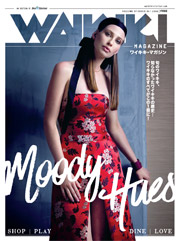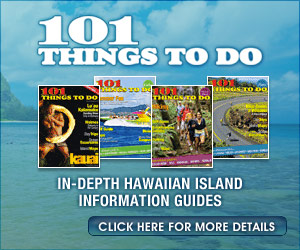A Piece of Island Tradition: Hawai‘i’s Aloha Festivals
This annual event—the longest running celebration in the islands—honors Hawaiian culture and community with pageantry and aloha.
As the season of summer ends and autumn comes to the Hawaiian Islands, few physical changes are noticeable. However, in ancient Hawai‘i, the fall transition signaled that the season of Lono, the god of peace, was on the horizon. Today, in Hawai‘i, this time of year brings with it the longest-running celebration in all the Hawaiian Islands and the only statewide cultural festival in the United States—Aloha Festivals.
The genesis of Aloha Festivals came in 1946 at a time when the world was rising out of the effects of World War II. Hawai‘i was an American territory, but Hawai‘i’s people needed nurturing. Honolulu businessman and Junior Chamber of Commerce member Harry Nordmark lamented that much of ancient Hawai‘i was tucked away behind museum glass. So, along with fellow Jaycees, he obtained enough financial support to realize his vision for a weeklong step toward revitalizing the Hawaiian culture, and the first Aloha Week festival was held.
Aloha Week was defined from the beginning by its pageantry. Accomplished and respected graphic artist, and director emeritus of Aloha Festivals, Momi Cazimero explains, “Hawai‘i attracts many people who love the pageantry, the parade, the food, the music and the celebratory events.” A Royal Court was first appointed in 1948 with each courtier donning the traditional red and yellow dress of Hawaiian ali‘i (royalty). As years passed and other Hawaiian Islands came to join in the celebration, they would select their own Royal Courts as a ceremonial reminder of the spirit and strength that once defined the Hawaiian nation. By 1991, the cultural festivities had extended to six of the Hawaiian Islands, so Aloha Week became Aloha Festivals.
Traditional song and chant mark the opening of Aloha Festivals each year. The first official mea oli (chanter) was Hoakalei Kamau‘u; her daughter Macey preserves this role in today’s Aloha Festivals. Throughout the island-wide festivities, chant, craft, hula and music that have defined Hawai‘i for centuries and into modernity are accessible for visitors and residents alike to enjoy.
Cazimero follows, “Aloha Festivals was planned primarily as a time for kama‘aina. It was planned as a time to come together to share all the things we enjoy with friends and neighbors.” In Honolulu, the Waikiki Ho‘olaule‘a stands as the biggest free celebration of the year complete with lei vendors, crafters and tiered stages for music and hula performances. “It has become a big block party that welcomes everyone from local families to visitors, school students to military personnel, with open arms to halau and musicians.”
The vibrant and grand Floral Parade travels along Ala Moana Boulevard and Kalakaua Avenue, to the thrill of onlookers, as a procession of extraordinarily flowered floats, high school marching bands, and a myriad of performers from cultures all around the world. “Aloha Festivals celebrates community,” Cazimero says.
One of the most striking features of the Floral Parade is also one of the most uniquely Hawaiian—the pa‘u riders. Every year, women are selected to represent each of the eight major Hawaiian Islands and are attired and adorned with the color and flower of their respective isles. For example, the woman representing the island of O‘ahu wears yellow with lei of pua ‘ilima.
In the Hawaiian language, the word pa‘u is associated with a woman’s skirt and with the yards of fabric wrapped around the ball gown of the esteemed rider. Horsemanship and posture are key, as the honor of pa‘u riding is associated with representing one’s ali‘i—one’s kupuna (elders).
The 2014 theme for Aloha Festivals is “Maluhia Honua— World Peace with Aloha.”
As nations around the world continue to move forward with a more global focus, one that is based in an international sharing of worldviews, products, ideas and aspects of culture, the concept of peace remains present as an undercurrent. This year’s Aloha Festivals theme was inspired by beloved composer Irmgard Farden ‘Aluli’s “For a Peaceful World” because the song exemplifies peace and harmony in both its words and its melody.
Cazimero expounds on the song’s message, this year’s Aloha Festival theme, and her own hopes, “I want our visitors to recognize and appreciate the similarity in values that we, as a community, embrace. We value in others what we value in ourselves. This gift of acceptance and sharing is the foundation of the Aloha Spirit. The Aloha Spirit is the first step toward a peaceful world.”
For more information: www.alohafestivals.com
PHOTOS: COURTESY ALOHA FESTIVALS












